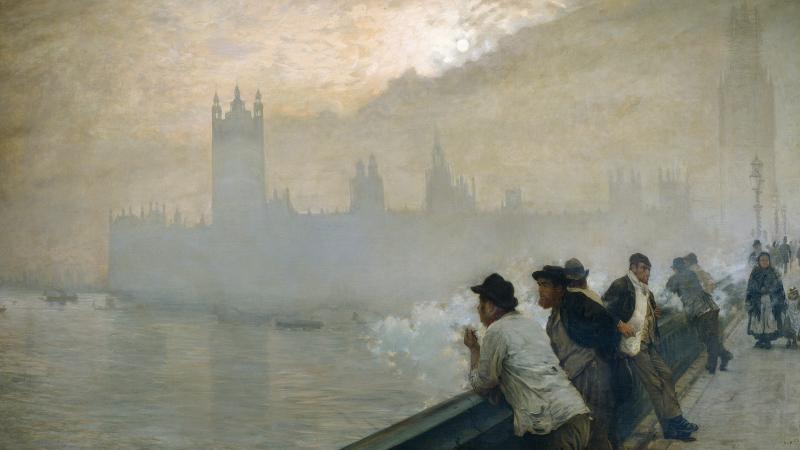via the Big Think blog by Mike Colagrossi
Humans evolved to live in the cold through a number of environmental and genetic factors.
- According to some relatively new research, many of our early human cousins preceded Homo sapien migrations north by hundreds of thousands or even millions of years.
- Cross-breeding with other ancient hominids gave some subsets of human population the genes to contend and thrive in colder and harsher climates.
- Behavioral and dietary changes also helped humans adapt to cold climates.
==============================
via Arts & Letters Daily: Julie Sedivy in Nautilus
Literature’s evolution has reflected and spurred the growing complexity of society.
Reading medieval literature, it’s hard not to be impressed with how much the characters get done—as when we read about King Harold doing battle in one of the Sagas of the Icelanders, written in about 1230. The first sentence bristles with purposeful action: “King Harold proclaimed a general levy, and gathered a fleet, summoning his forces far and wide through the land.” By the end of the third paragraph, the king has launched his fleet against a rebel army, fought numerous battles involving “much slaughter in either host,” bound up the wounds of his men, dispensed rewards to the loyal, and “was supreme over all Norway.” What the saga doesn’t tell us is how Harold felt about any of this, whether his drive to conquer was fueled by a tyrannical father’s barely concealed contempt, or whether his legacy ultimately surpassed or fell short of his deepest hopes.
Continue reading
“Reading medieval literature”? What is this mystery of which you speak?
I’ve never tried, not even in translation. About the oldest text I have ever tried to read in its origianl language would be Shakepeare. And that is close enough to modern English.
==============================
via About History

Introduction and War
By 1895, the African continent was largely divided between the European powers, but Ethiopia, remained independent. Italy, which was late to the division of the world, hoped to seize Ethiopia and make it the main part of its colonial possessions. The occupation of Aseba (1880) and Massawa (1885) by the Italians on the African coast of the Red Sea along with the desire to gradually expand the boundaries of their possessions at the expense of the neighboring Ethiopian province of Tigray and Abyssinia under Bogos land, led Italy to an armed clash with Ethiopia.
Continue reading
==============================
via Interesting Literature
John Clare (1793-1864) is often overlooked in accounts of Romantic poetry, but he wrote sensitively and originally about the English countryside and his poetry displays a fine eye for local detail. He is regarded by some as the finest nature poet in the English language. His poem ‘Autumn’ showcases his rare talents, and repays closer analysis: consider the wonderful line ‘Hill-tops like hot iron glitter bright in the sun’.
Continue reading
==============================
via Boing Boing by David Pescovitz

This recently-discovered dinosaur weighed 26,000 pounds when it stomped around South Africa's Free State Province 200 million years ago. The University of the Witwatersrand researchers who found the animal's fossils dubbed it Ledumahadi mafube which in the South African language of Sesotho means "a giant thunderclap at dawn." Like the brontosaurus, it walked on four legs and ate plants.
Continue reading
==============================
via Arts & Letters Daily: Danny Heitman in National Endownment for the Humanities
No wonder he has such distinguished admirers

Westminster by Giuseppe de Nittis (1846–1884), oil on canvas, 110x195 cm / De Agostini Picture Library / A. Dagli Orti / Bridgeman Images
In an 1830 essay called “London Solitude,” the English writer William Hazlitt considered a profound paradox of urban life—namely, that in one of the most populated places on earth it’s still possible to feel vividly and sometimes painfully alone.
Continue reading
==============================
via the OUP blog by Robin Crewe and Robin Moritz

‘lavender-bee-summer’ by castleguard. CC0 via Pixabay.
Honey bee colonies have historically been considered as marvels of evolution resulting in perfectly cooperative and harmonious societies, and exemplars of what we humans might achieve. This is an appealing image to many, but it is of course a caricature. Nobody is perfect, not even honey bees. As with any complex social system, honey bee societies are prone to error, robbery and social parasitism. Although there is only a single queen, the honey bee colony is composed of many subfamilies as the queen can mate with over 50 drones, using the sperm from all to produce offspring. The resulting web of subfamilies facilitates worker specialization, but also provides huge potential for intracolonial conflict.
Continue reading
==============================
One God stands for order, logic, and reason. The other stands for chaos, madness, and drunkenness. Nietzsche thinks you need both.
via the Big Think blog by Scotty Hendricks
In his first book The Birth of Tragedy, Nietzsche examines art, particularly ancient Greek plays. While he didn’t write the last word on the subject, he did use the book to introduce a concept which would continue to appear in his thinking long after he dismissed his earliest work as “badly written, ponderous, embarrassing, image-mad and image-confused”.
Continue reading
==============================
August 13, 2018 3:00 pmvia Interesting Literature
‘On the Friendship betwixt Two Ladies’ was written by Edmund Waller (1606-87), who is probably best-known for his short lyric ‘Go, lovely rose’. Waller, whose life was as colourful as one might expect of a poet who lived through the English Civil War, is one of the wittiest minor poets of the seventeenth century, although not as great (or as famous) as his contemporaries, Robert Herrick and Andrew Marvell.
Continue reading
==============================
via Boing Boing by Andrea James

Slovenian artist Kaja Upelj moved to London for school, where she has been creating interesting experimental glass works with unusual colorations and deliberate occlusions.
Continue reading
No comments:
Post a Comment